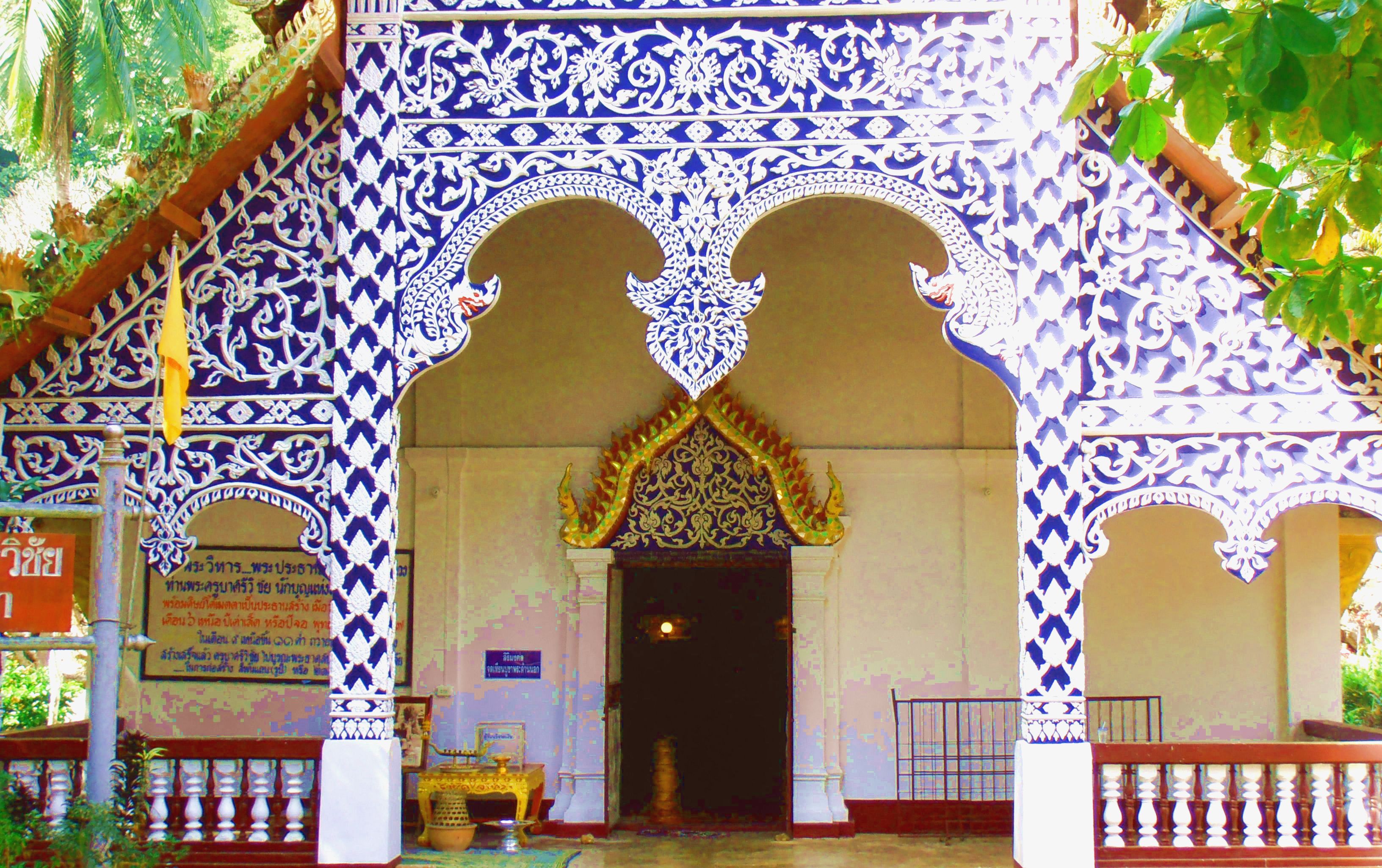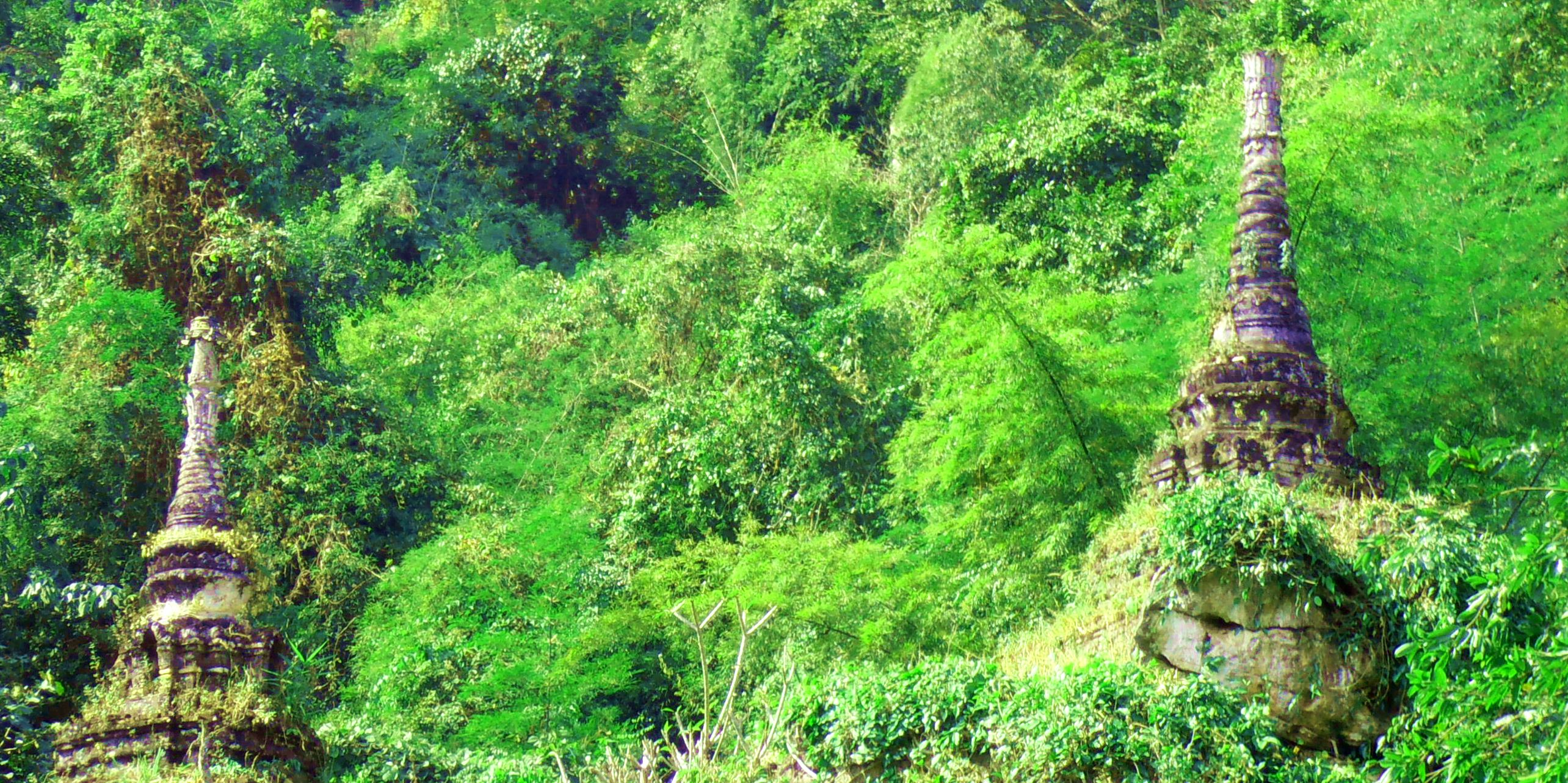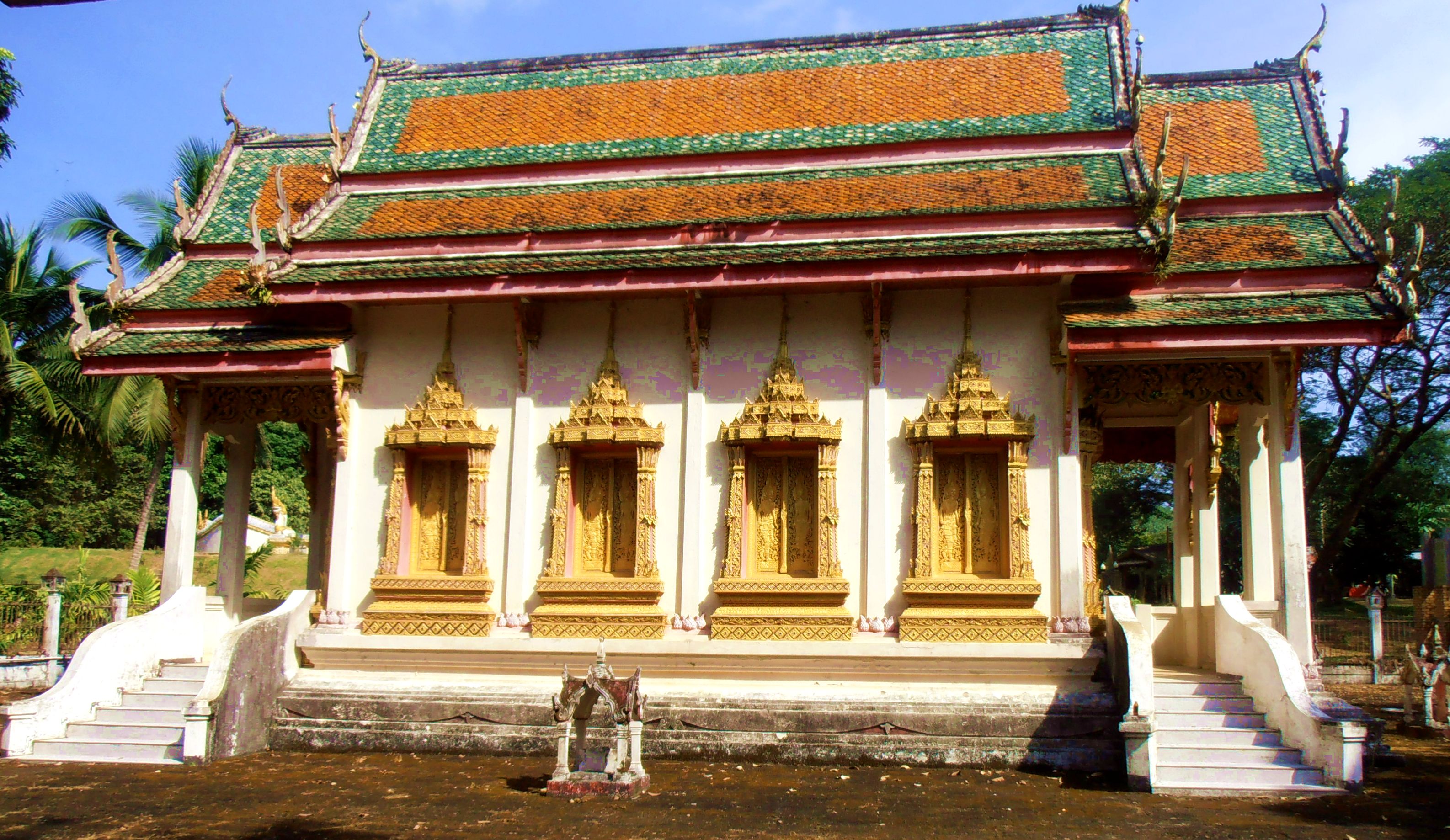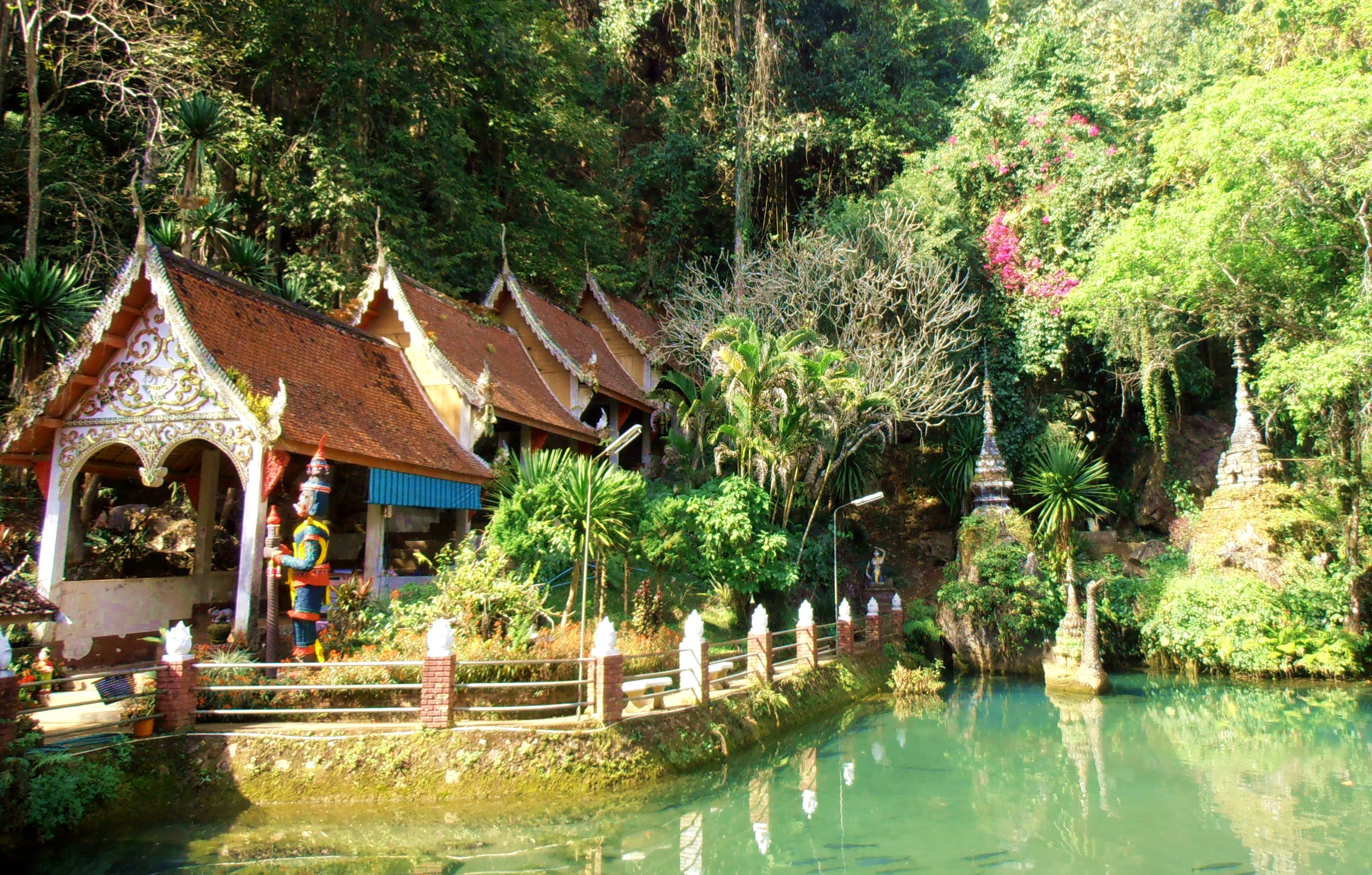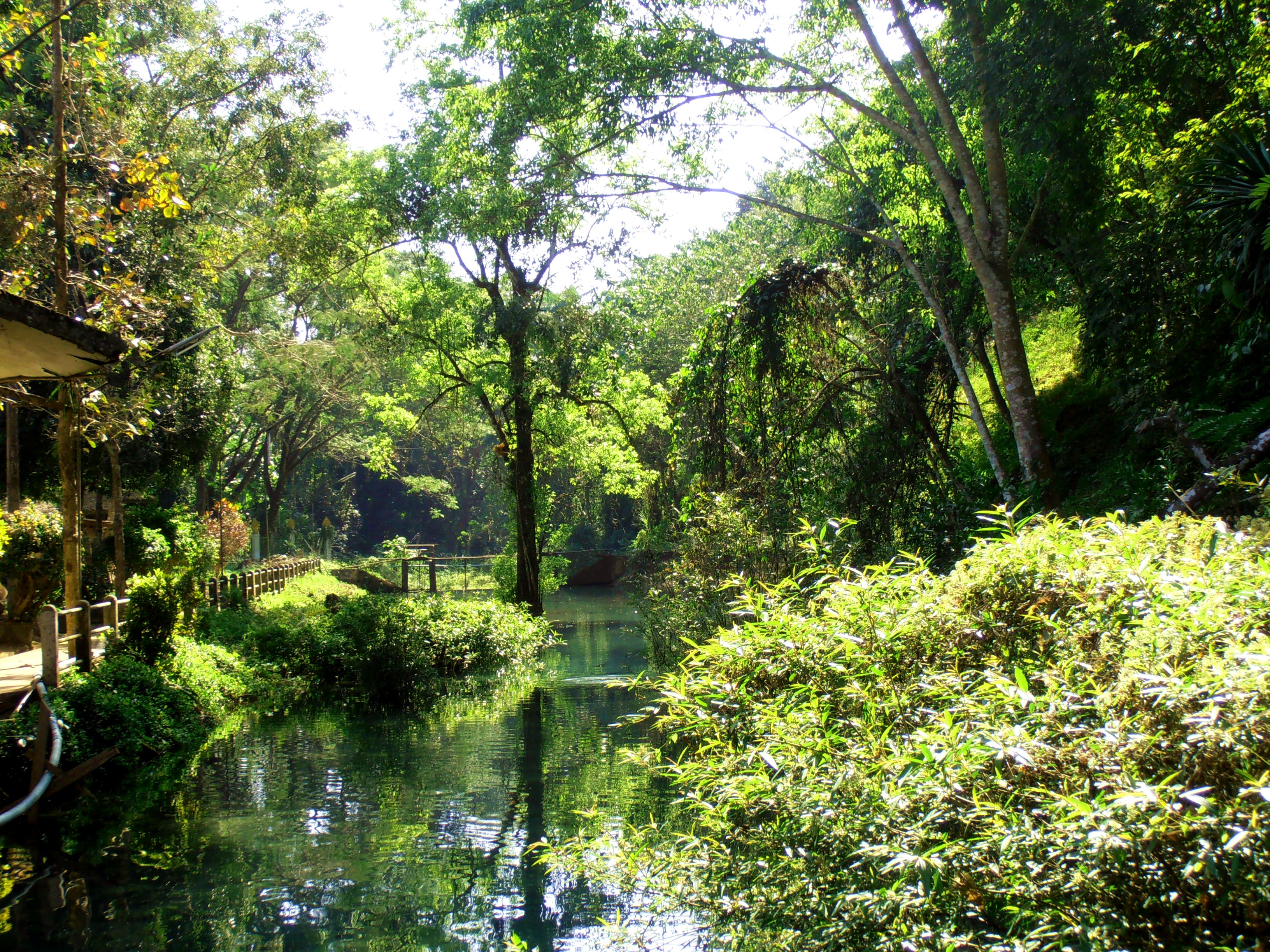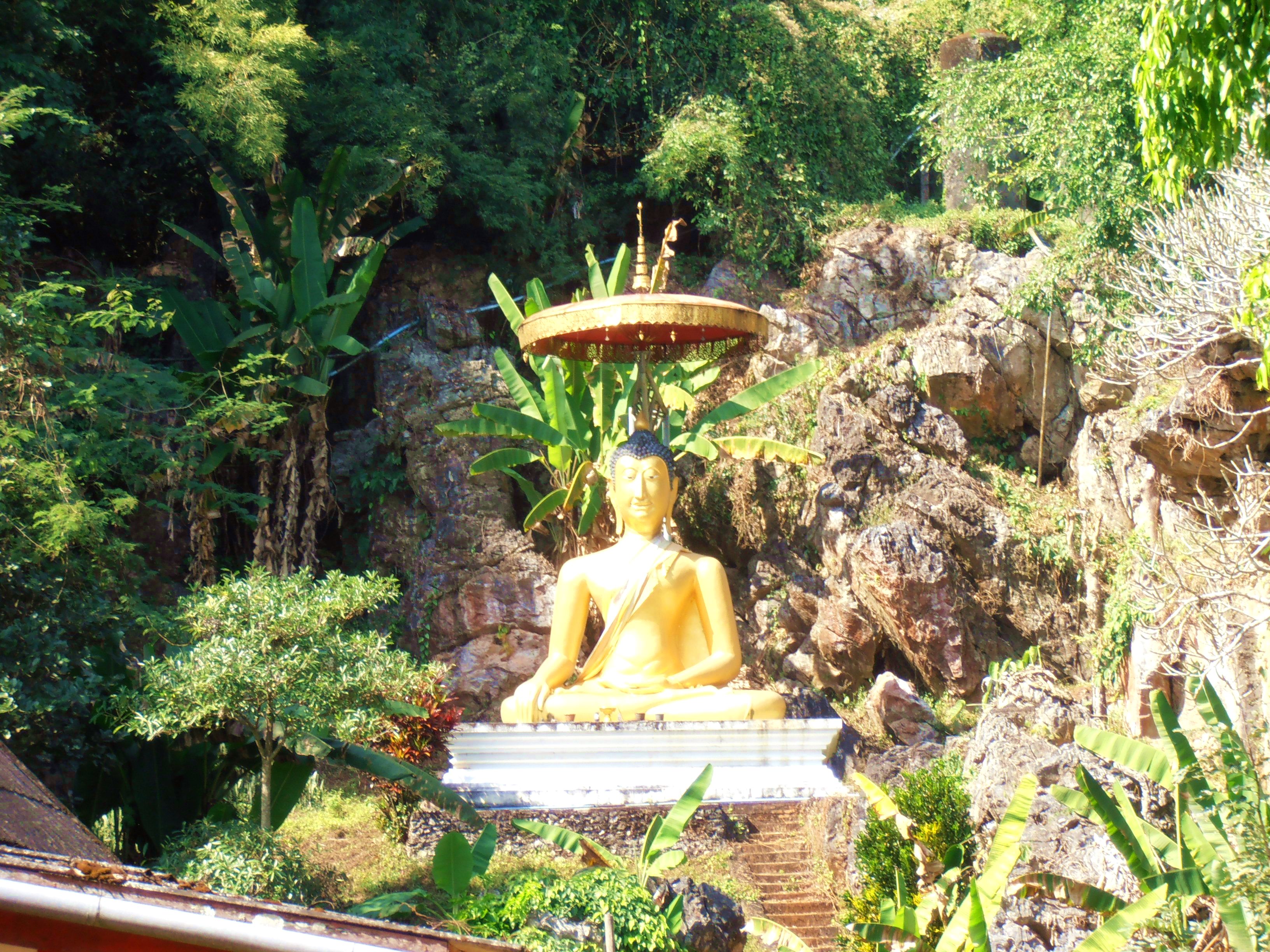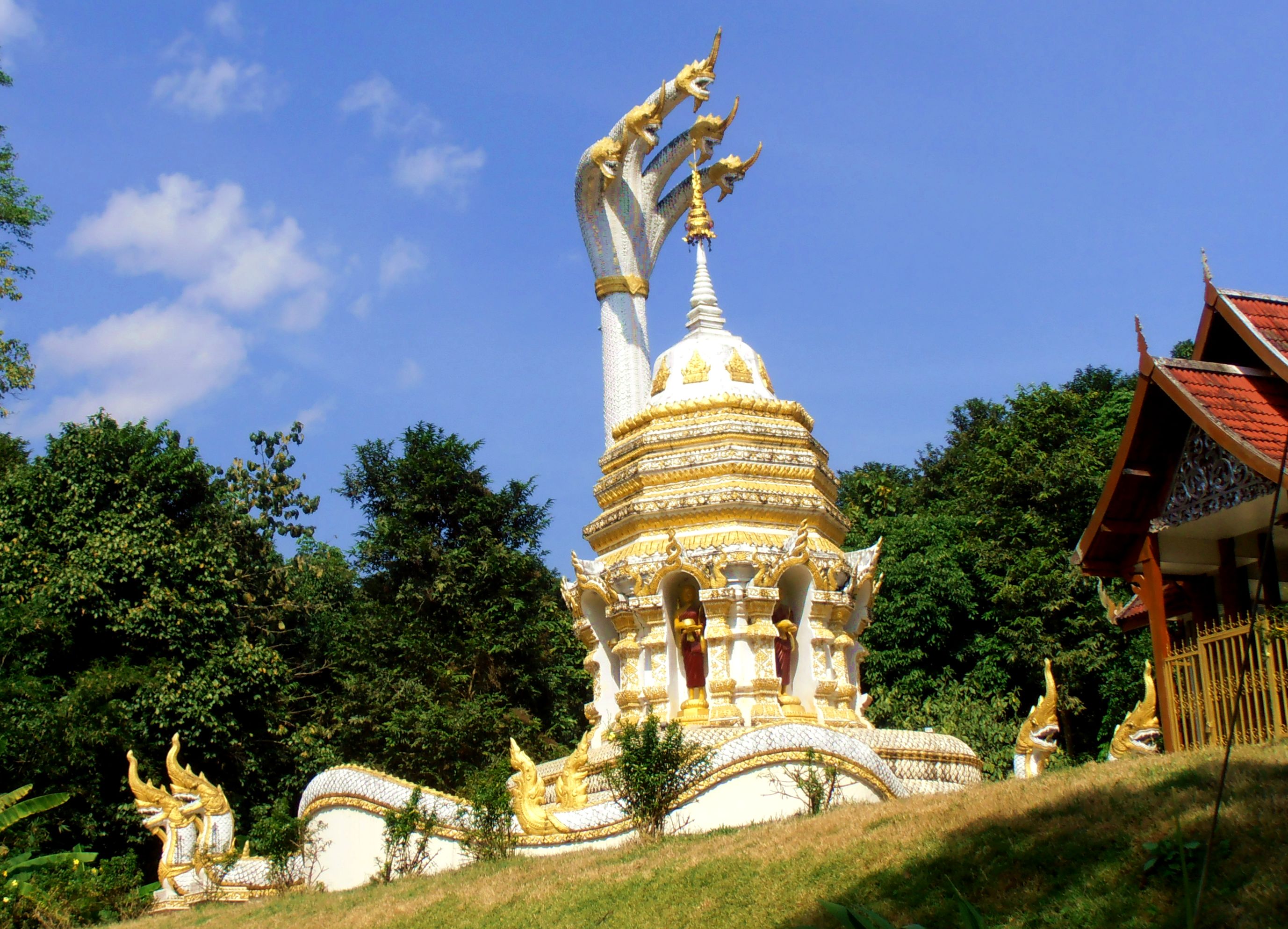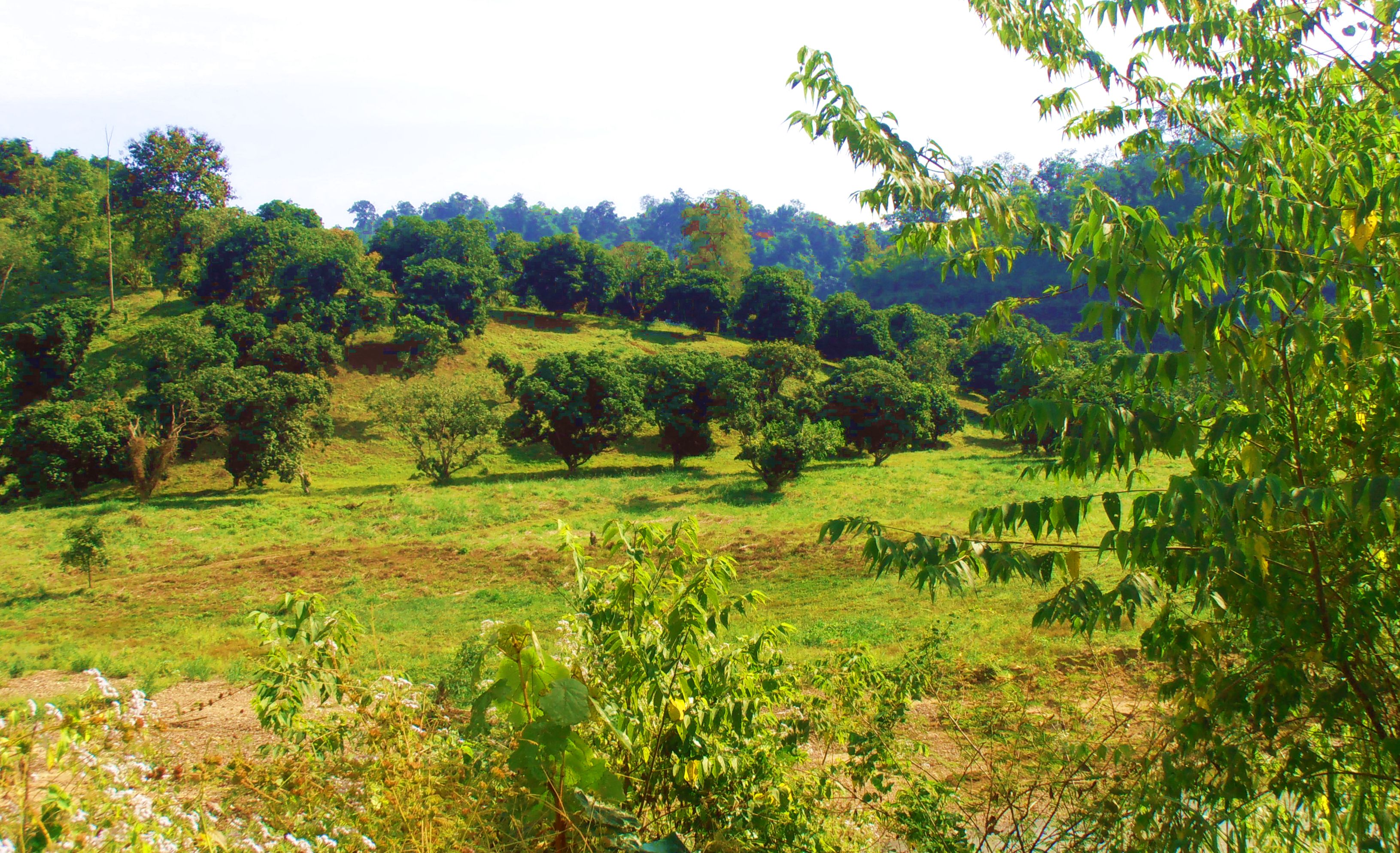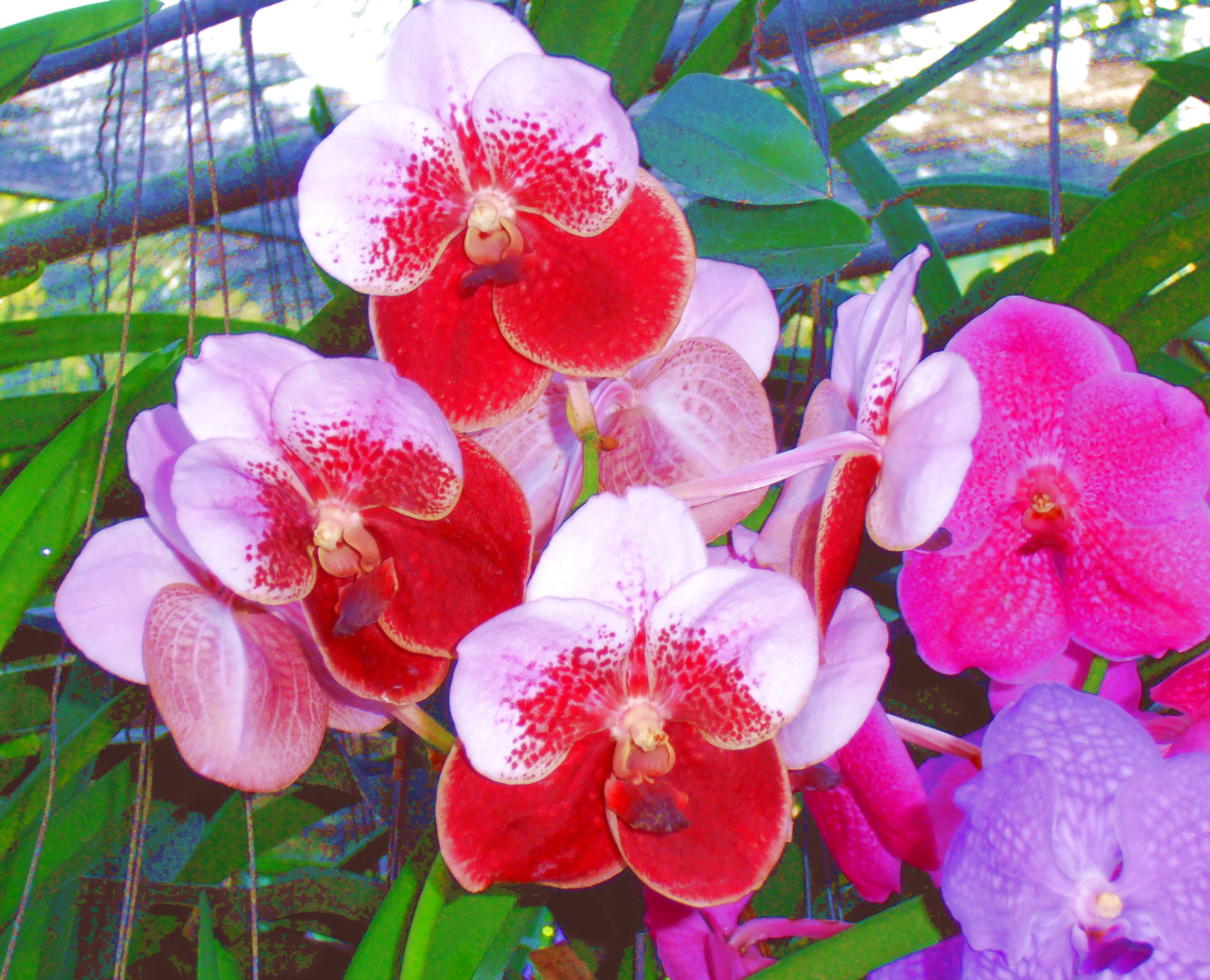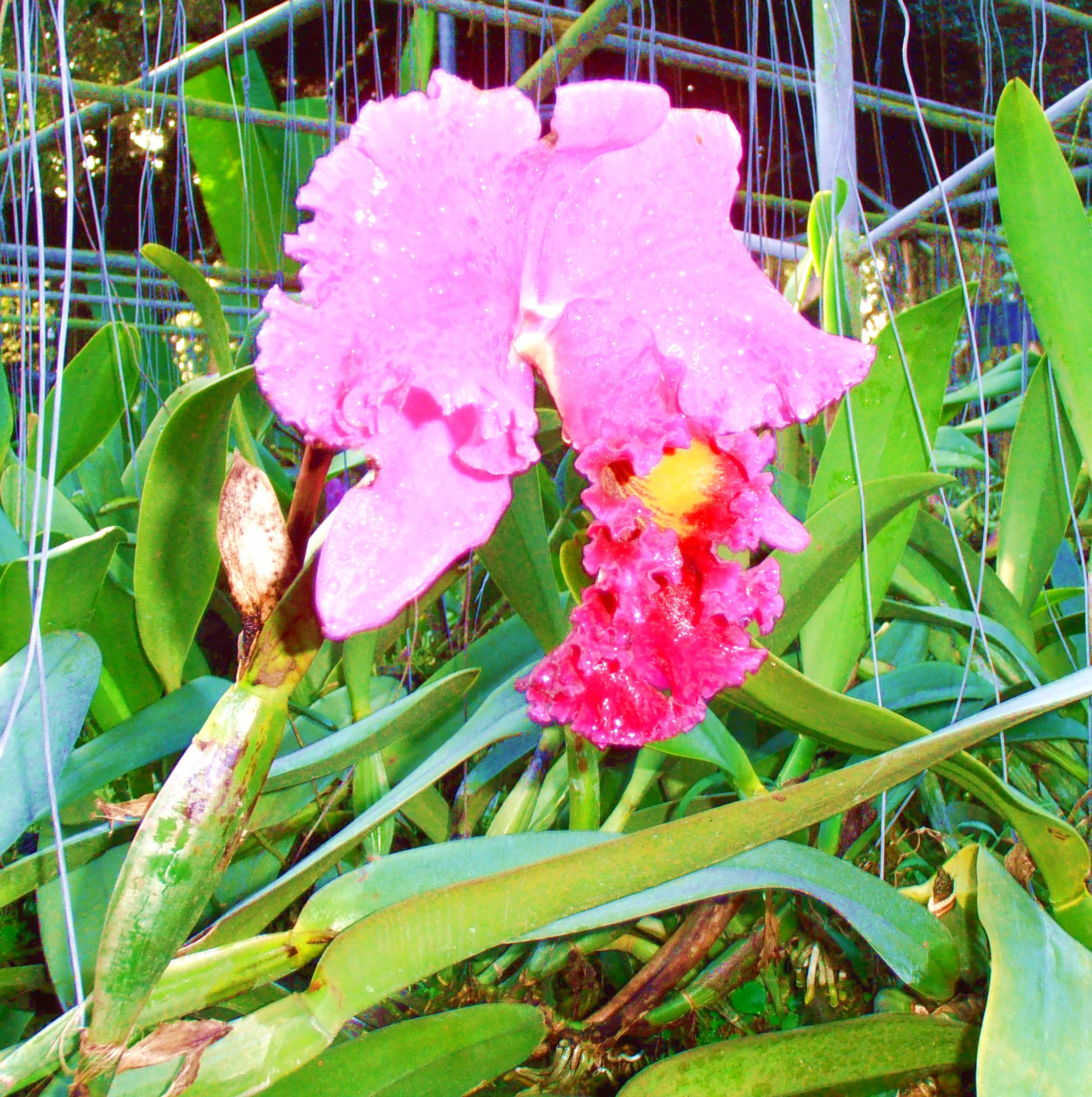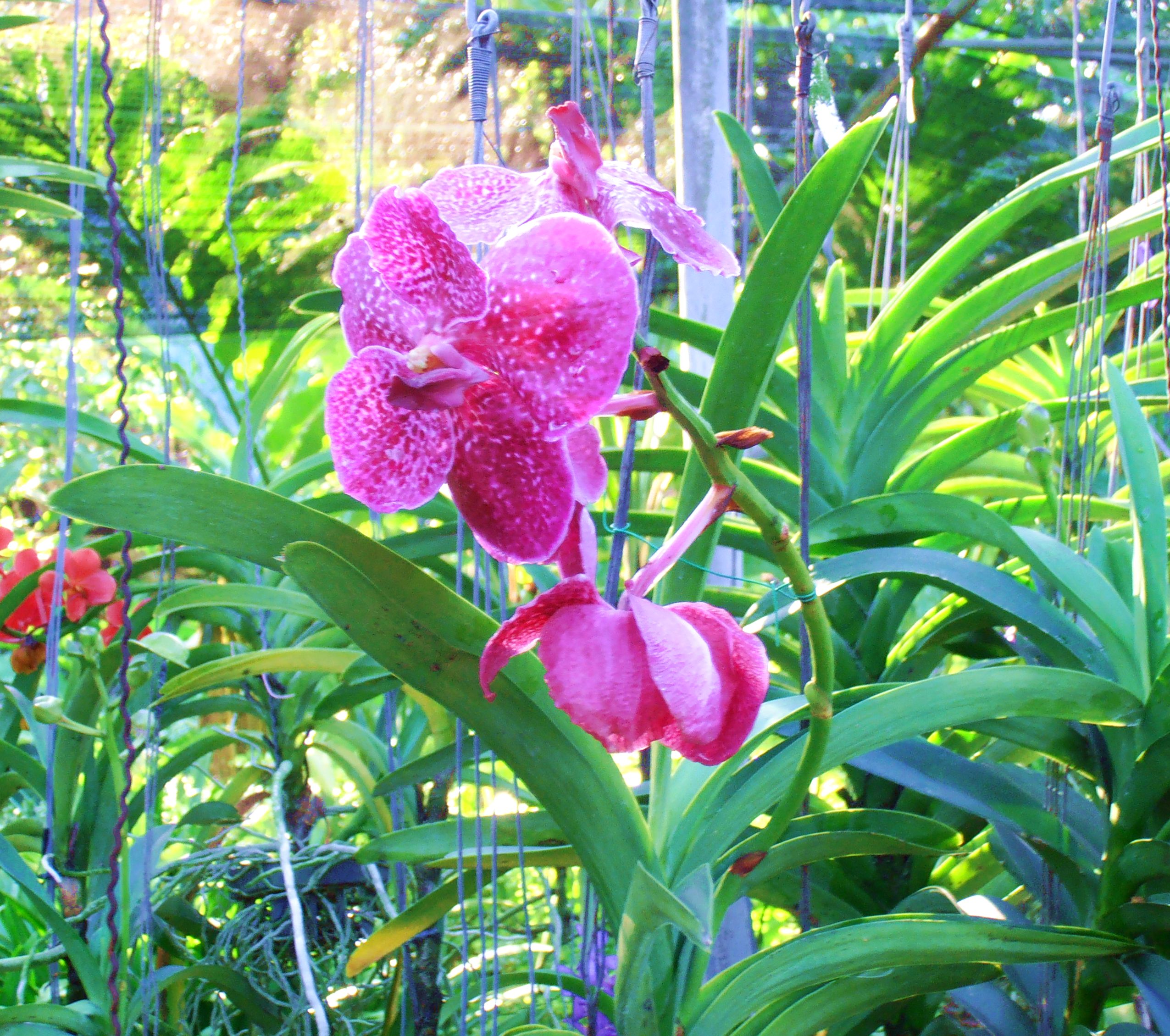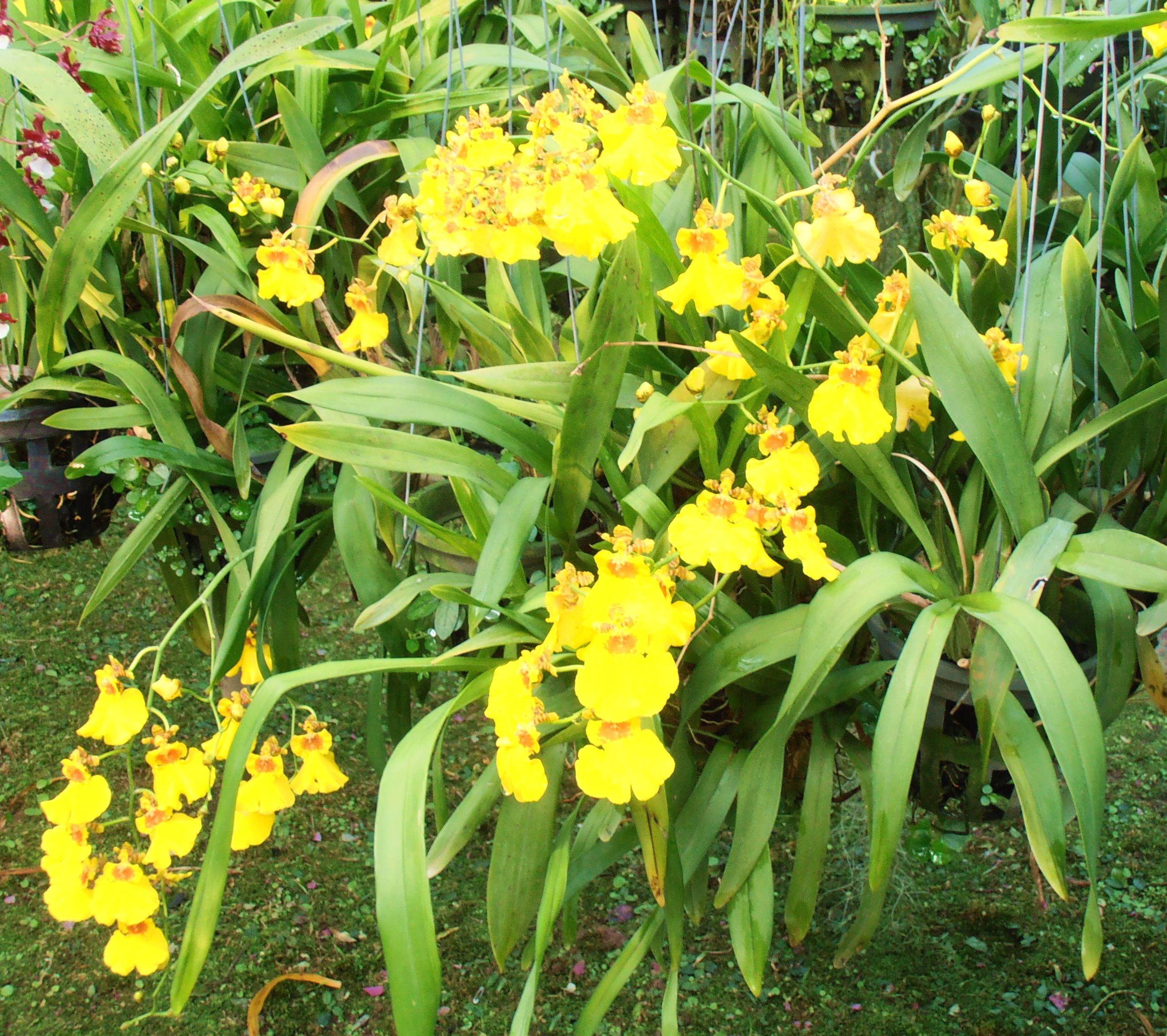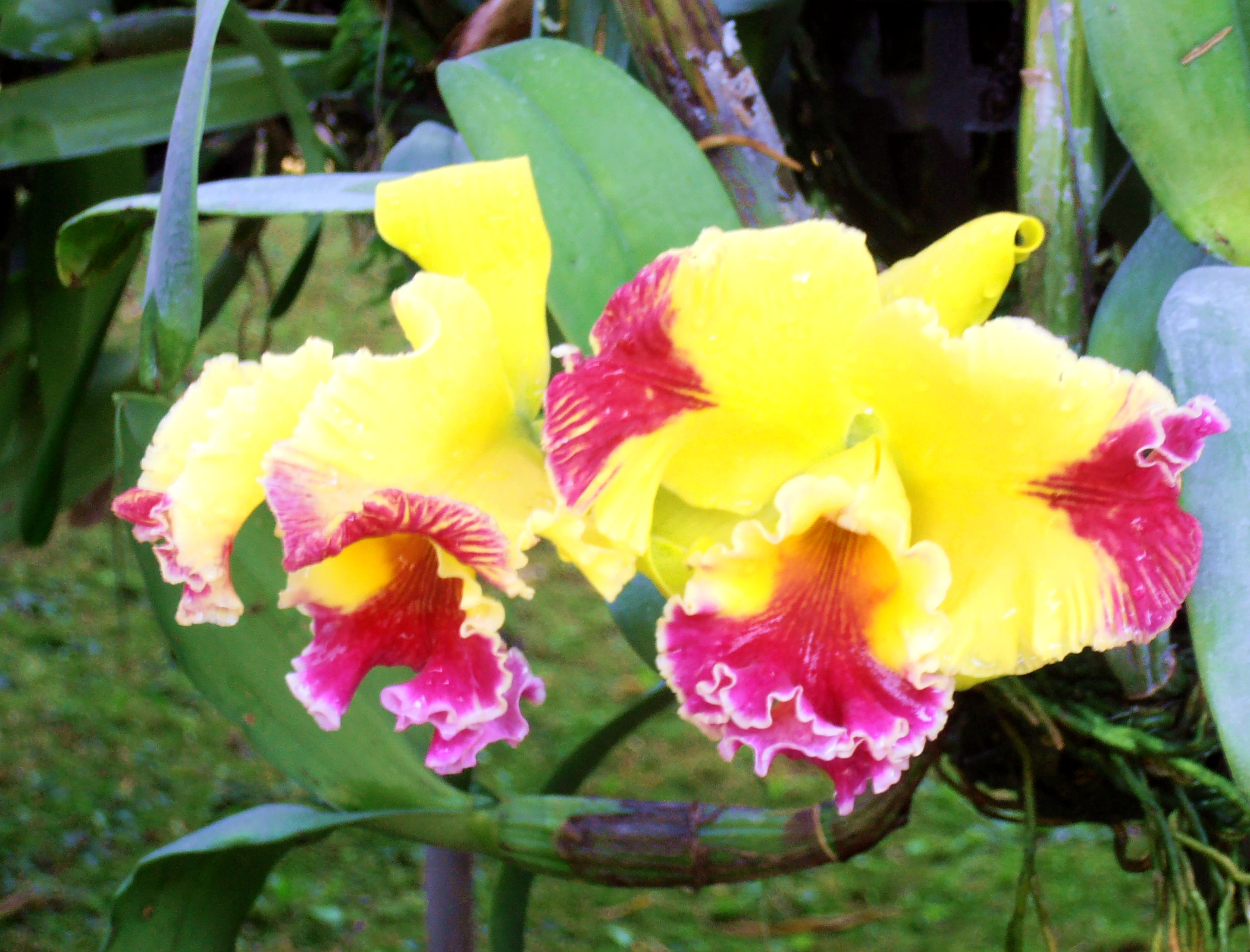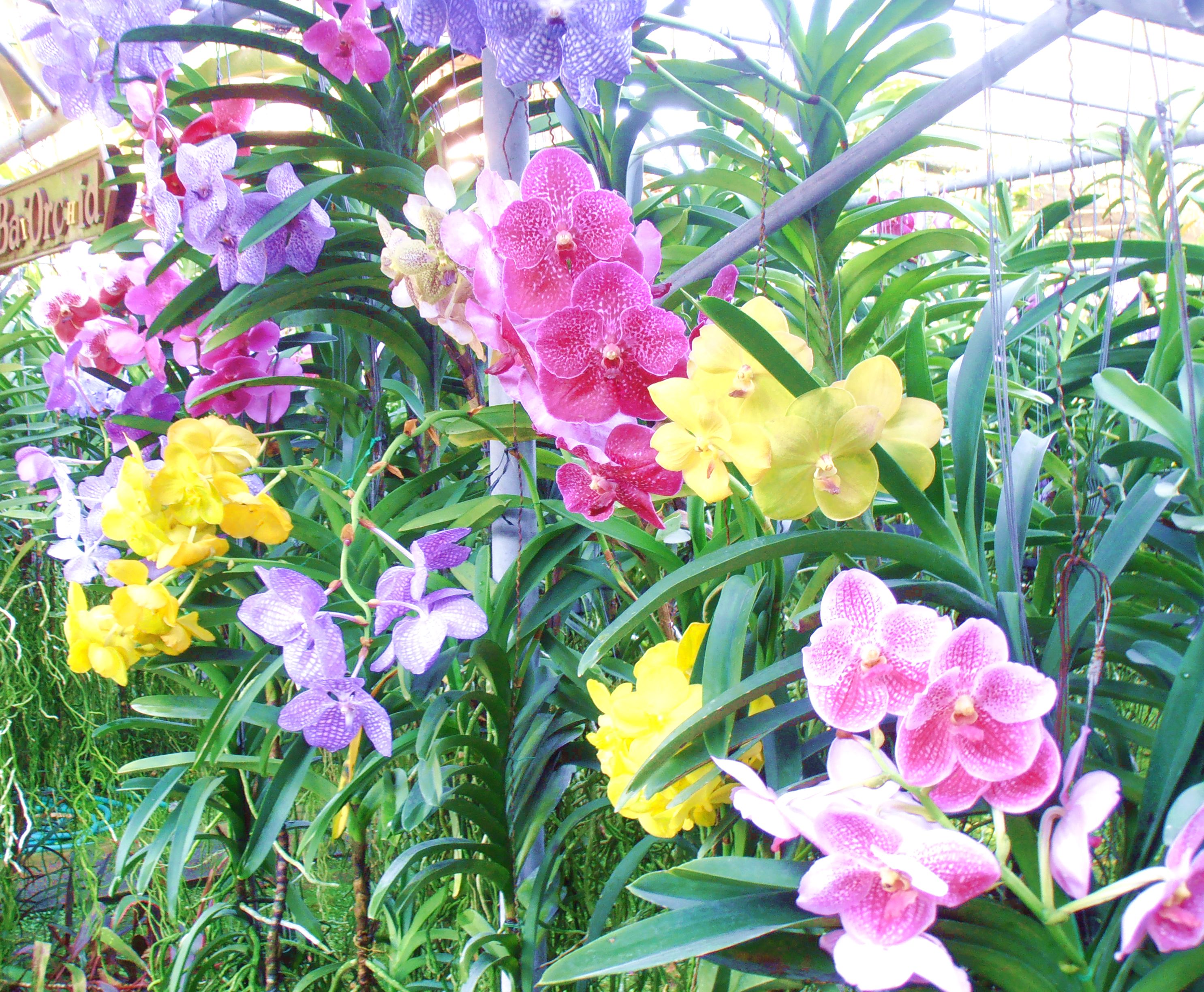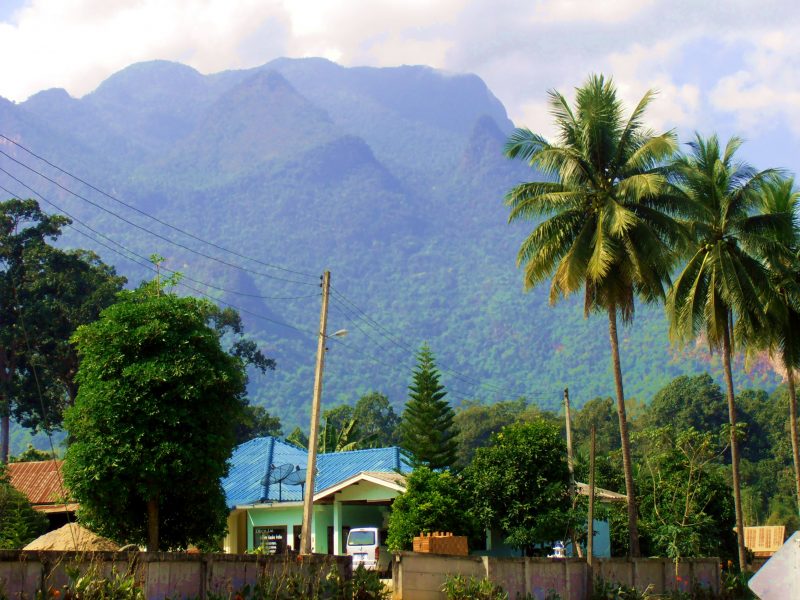
June 2018
In 2012 I made my second trip to Chiang Mai and the tourist fever was still strong upon me. A friend of mine suggested a day trip to Chiang Dao, to which I readily agreed without even looking at the map. I heard talk of temples and caves and I was in, it didn’t matter how far away. In point of fact, Chiang Dao lies 89 kilometers (55 miles) north of Chiang Mai. That distance is nothing to daunt a hardy traveller, but hindsight brings the insight that 55 miles in a car is one thing and quite a different matter on the back of 125cc motorbike. My bum and I survived and the visual delights the day afforded more than made up for any stiffness the next day. The temple complex at Chiang Dao was the destination of record, but on the way back to Chiang Mai we happened upon an orchid greenhouse that certainly, from the standpoint of visual splendor, deserves equal billing. I’m including both in this post to capture all the riches the day brought in its course.
Doi Chiang Dao is the third highest mountain in Thailand after the granddaddy, Doi Inthanon, which lies southwest of Chiang Mai a short distance, and Doi Pa Hom Pok, also in Chiang Mai Province. Most of the area around Chiang Dao is national park. The mountains of the area are limestone so their shapes are surprising and severe and at times, like Doi Chiang Dao itself, they spring up seemingly out of nowhere. Since limestone is a permeable thing you can expect waterfalls and springs and all manner of water loveliness, and Chiang Dao does not disappoint in that regard, to be sure. Since we were on a day trip, my exploration of the area limited itself to the temple complex with its caves crammed full of Buddhas. The mountain scenery surrounding the village is delicious, but to engage it in earnest requires time and preparation, which unfortunately had no room on our agenda. So I contented myself with the visuals and hope one day to do some hiking in the area, which would without doubt be a delight.
The road from Chiang Mai to Chiang Dao is a major highway so the travel is actually quite easy. About two thirds of the way through the journey comes a hilly bit through farmland I found very scenic — a first hint of hills. The landscape continues to mount as you move north and at last you come to the hulking form of Doi Chiang Dao itself, looming over the village somewhat alarmingly — should it tip over at some point Chiang Dao village would end up flat as a pancake underneath that massive bulk. The village itself is nothing to write home about, as the saying goes — a rural northern Thai village like many others, its only claim to fame the Buddha caves and the fine temple complex built up around them. Let’s pretend we’ve just arrived at the temple complex after wending our way through the village and see what meets the eye.
The architecture and ornament in the Chiang Dao temple complex is very well done, as you can see in the pics. I’m always a sucker for blue and white decorative schemes — Meissen Blue Onion dinnerware, Delft tiles, Portuguese azulejos, Ming dynasty porcelains and in this case Thai temple buildings with a blue background over which beautifully intricate ornament is picked out in white tracery. The porch of the vihara is entirely given over to this fugue-like figurative scheme in blue and white. Stunning. Architecturally speaking this temple front is among my favorite in the Chiang Mai region.
A main feature of the temple complex is its lake, or pond, I’m not sure which term to use to describe it. It’s small for a lake and rather large for a pond. It’s also festooned with carp, which I suppose militates for “pond” as the better designation, but we dare not lapse into poor taste by suggesting that the fish are there for any purpose other than to be ornamental. The pond lies at the entrance to the Chiang Dao caves, of which mention must be made if one is at the temple complex since they’re ostensibly the Big Deal here. I offer a differing opinion, preferring as I do the world of sunlight and color to the darkness and fustiness of caves. Yes, you can go into the caves if you like and see a rather disorderly array of Buddha figures. Since it’s a tourist destination, there are guides and “donations” to be made and lanterns available for hire and all the other things that go with such places. You can walk to see the first cave without any additional folderol — in, out, nobody gets hurt — but to go farther requires the guide and the lantern and … and …
I went into the first cave just because I was being a dutiful tourist, but to be honest, one look at the dank interior and every fiber of my being longed to turn around and step out again into the sunlight and the colors of the landscape and the temple buildings. If you’re a spelunker at heart, your impression will be quite different and perhaps the scene may inspire excitement, I can’t comment on the merits of the venue as a caving experience since I went no further than the free bit allows. So for detailed information on the caves farther back — the story goes that they extend some 10km underneath the mountain — I release you to the splendors and miseries of the Internet to get the skinny on all that stuff. We’re going back out into the sunshine, since there’s still more to see by the light of day instead of by the glow of a propane lantern.
What a relief to reach the cave entrance again and to be greeted by the sight of the pond and the greenery. I maintain that where plants will not grow, human beings also have no business. We may not be photosynthetic but we require sunlight just like our plant friends do, after all. And just look at the pics, for heaven’s sake, what a delight to the eye the vicinity of the cave entrance is. The pond is lovely, the buildings around it are beautiful and unobtrusive in the landscape as buildings rightly should be, and for mindfulness or devotion there is a Buddha looking out over the pond as a touchpoint for the real purpose of everything you see in the surroundings. While the modeling of the face may not be as successful as one might wish –it can easily prompt comparisons with a headshot of Walter Matthau if one hails from the American cultural ambit as I do — the posture of composure in the Buddha’s bhumisparsha mudra, that of “touching the Earth” as a call to serve as witness to his Enlightenment, provides all the prompting one really needs for mindfulness of deeper dimensions in that handsome and serene setting.
For me, the entrance to the caves serves best as exactly what it is — an entrance. No need to go inside, really, just enjoy the entrance as an entrance. The architecture of the structure, nested in Lanna style and thus harmonious with the architectural conventions used in the temple buildings themselves, is quite enough all by itself as an object of contemplation. One need not avail oneself of its function to appreciate it. Only one thing would induce me through curiosity to closer approach: the fantastical figure beside the entryway, which to my mind looks like it should be in a Royal Ballet production of the “Nutcracker” rather than standing guard over the entrance to a cave. When it comes to caves, it seems to me that protection needs to be done more against what comes out of them than what goes in. It’s all a matter of perspective, however, as is the case with most things. My failure to appreciate adequately the fierceness of our handsome guardian deity doubtless stems from my inability to take the demonic very seriously in any context save the economic and the political, where it’s only too easy to espy devils afoot in numbers too great to count.
There are other temples strung like jewels up the side of the mountain, some of which are accessible by a short hike up stairways that would not, I think, daunt any but the very faint of heart. Since our time was short — travel by motorbike being a more lengthy affair than zipping about in a car — we took no time to go up and instead headed out. This visit is the only one I’ve made to Chiang Dao, but the impression of the place has remained strong with me over the years. The temple buildings are lovely, it’s true, but as examples of northern Thai temple architecture they’re not paragons of any sort; one can find more grandiose examples in Chiang Mai, studded with dozens of stunning temples as it is. What I carried away from the temple complex in Chiang Dao was an abiding sense of repose and the harmony of an environment in which the architecture and the natural setting synergize to form an ensemble which impresses the senses as such. I can’t think of the blue and white vihara porch without thinking of the sunlight on the water of the pond. I can’t remember the beautifully ornate gables of the ubosot without having in mind simultaneously the handsome bulk of Doi Chiang Dao jutting up behind the building. I doubt that any architect placed things with a studied intent to make sure the buildings and the natural setting would work together in the way they do. I think it’s a happy accident, but it’s real, it works powerfully, and that’s what really matters in the final accounting.
With our time at the temple complex at an end, back we climbed onto the motorbike for the return to Chiang Mai. Here are some pics of the countryside along the route:
I am myself scandalized — scandalized, I say — that I can’t for the life of me remember the exact location of the stupa in the second pic, with its hood of raging nagas. 🙁 So much for the dangers of inadequate notetaking during touristic excursions. My lack of pertinent data does nothing, however, to damage the impression the stupa creates, however vague its location and name may be in this instance. As I think back over my meanderings through the temples of the Chiang Mai region, I remember relatively few instances of multiple-headed naga figures, save at the temple complex in Doi Saket, northeast of Chiang Mai, where the person or persons who designed the decoration obviously couldn’t get enough of them. They are impressive, to be sure, but I find the open aggression of the figures a bit off-putting. They remind one more of Cosa Nostra thugs than of symbols of protection for the Buddha. All the grimacing and the threat of violence seems a bit too postured for my taste. Godfather nagas, one might say — and going from left to right their names are Guido, Domenico, Angelo … JUST KIDDING 🙂 If one takes the scene from a distance it’s all rather jaunty, really, and nobody’s going to get chomped so there’s no need get your panties in a knot. This grouping is the only instance I remember in the region of multiple-headed nagas arched over an architectural element rather than above a figure of the Buddha himself. So hats off to the invention of the designer and the stunning effect of the stupa itself, with its white and gold ornament that looks like it could, if slightly repurposed, be a pot or urn in the line of gold and white porcelain produced by the Saint-Cloud factory in France in the 18th century. Does madame take one or two cobras with her coffee?
The trip back to Chiang Mai was a rather more relaxed affair than the trip up, because we decided to spread it out over the rest of the day and let fortune be our guide concerning what to take in along the way. From that point forward my focus was flowers, not temples. We stopped for lunch at a roadside eatery with lovely plantings, as is the case with public spaces everywhere in Thailand, it’s apparently just part of Business As Usual. The food was fine, but the flowers were wonderful.
I have no idea what flowering tree we have in the first pic, but it’s a show-stopper. My goodness. And then we have dear old Clitoria ternatea in pic 2, which grows so freely here in the Philippines, as well. I was happy to find my reaction to the Euphorbia species in the first pic of the bottom row to be quite civil and accommodating, since where I hail from in Washington State the Euphorbiaceae are consistently bad news in the landscape, being nasty invasive species like the very devil to get rid of once they creep into the countryside. Here they’re suitably contained and ornamental, so it was all smiles and gracious nods of the head, how do you dooo so looovely to meet you. The last pic is of the Desert Rose, Adenium obesum, which I’ve always found particularly lovely. This is an immigrant, of course, being a species native to climes far harsher than anything Thailand could possibly throw its way. I’m always taken mildly aback when I see it in the tropics as I do in Thailand and the Philippines, because it grows as a native species in the Arabian Peninsula. This plant is the only thing in my experience that links my life in the tropics to the life I led in the Middle East. Whenever I see it I stop and take a moment to appreciate the fact that it creates that linkage with a spot of loveliness as welcome in the tropics as it is in its native habitat, some of which is no place for a lady, rest assured on that one, Bridget. You’d be as crispy as a corn chip in no time if you had to deal with prolonged exposure to it yourself. I too survived the desert and finally made it to the tropics, although unfortunately I offer no spot of loveliness that causes people to ooh and aah as they well might do with our lovely Adenium when in full bloom. But you can’t have everything, right? I’ll content myself with my tropical good fortune and keep moving, nothing daunted.
After the lunch stop we continued resolutely on the way back to Chiang Mai and then, mirabile dictu, we came upon an orchid greenhouse open to the public. Jackpot!! We pulled over lickety-split and in we went like a shot. And to prove that I was there, I submit the following for your consideration:
Those orchid buffs among you may well see an image and say, “Ah, there’s Xxx xxx, and a fine specimen, too.” I’m doing the dumb blonde thing here so all I have to say by way of commentary to the pics is, “Wow dude, AWESOME!!” Awesome, indeed.
The elephant fountain, as I now know after spending a goodly amount of time in Thailand, is typical of the handsomeness that Thais create using plants, sculpture and water. The first place where that talent impressed itself upon my awareness — with the force of the Rapture — was the bathroom of my dentist in Chiang Mai. Yes, Bridget, the bathroom in a dentist’s office — I’m not just making up stories here. When you go into a dentist’s office bathroom you expect cleanliness and functionality, at least that’s what I expect in the States. If there’s a particularly momsy type manning Reception, you may also find fancy SoftSoap and decorative Kleenex on the countertop, as well. Nothing prepared me, however, for the bathroom at the dentist’s in Chiang Mai. I opened the door and closed it behind me while looking at something on my phone, and when I looked up to take in the space I was brought to a standstill. The back wall of the room had been turned into a water feature — a curtain of water running quietly over textured tiles. There were orchids on holders projecting out from the water wall. And there were tall ceramic vases, beautifully burnished and in rich earth tones, together with a handsome array of toiletries on the counter with the bowl sink. I felt like going back out to Reception, changing the time of my appointment to a few hours later and locking myself in the bathroom in the meantime. It was that good, and done without any of the confustulations you see in Home Beautiful, for example — just water, ceramics, and flowers. Brilliant. And in my experience, as common in Thailand as the day is long. Bless their hearts.
With the day ending on such a high point, it seemed a crass tempting of fate to attempt anything more after the orchidmania had subsided enough to enable us to regain the road. So back to the hotel it was for a quiet dinner and an evening of looking at the images the day had brought. What a day it was, one loveliness after another. As a tourist, does it get any better than that?
If it does, give me the geocoordinates and be quick about it 🙂

